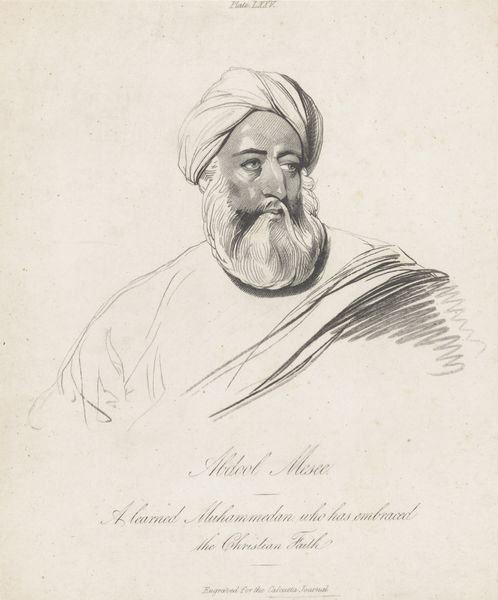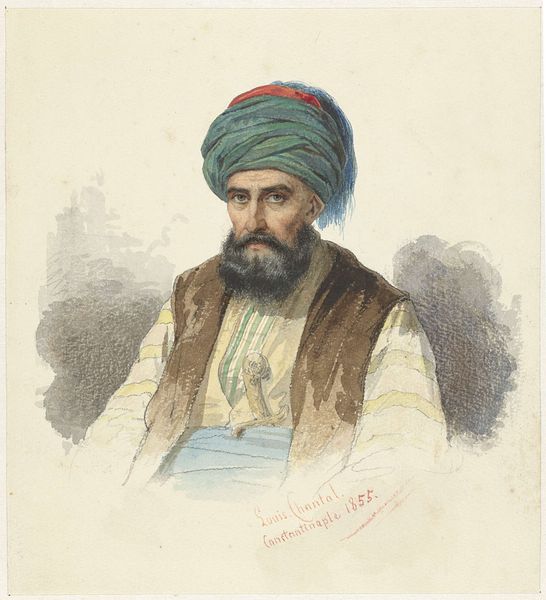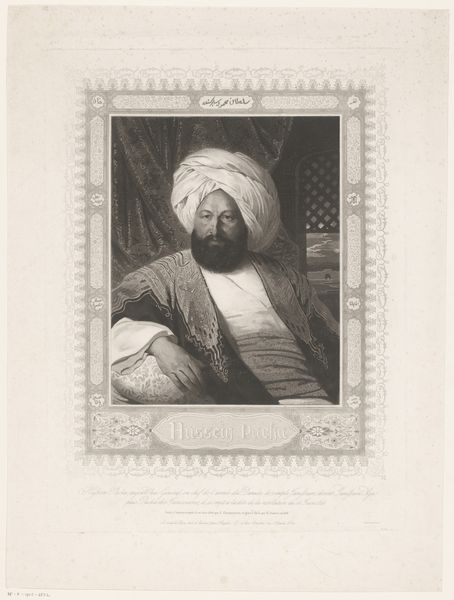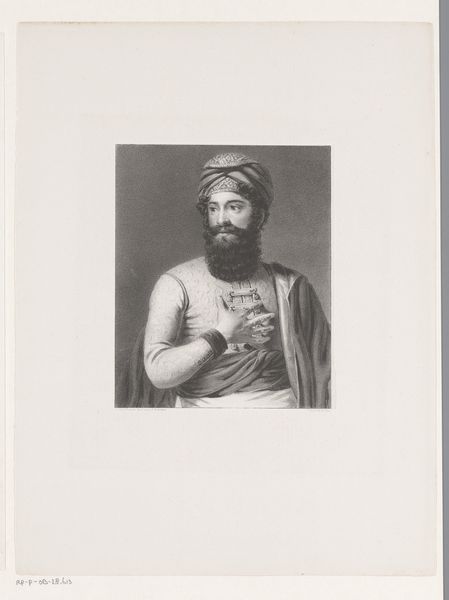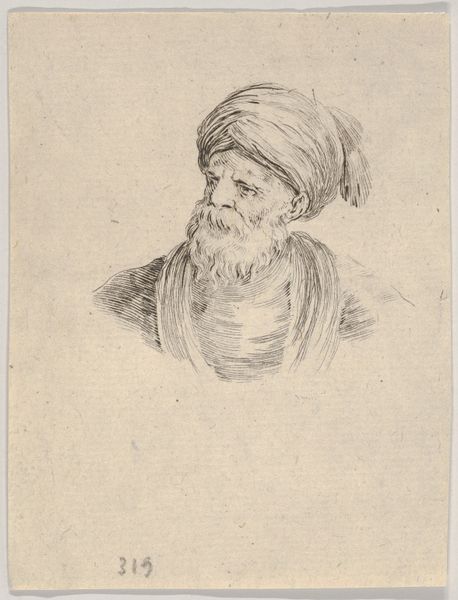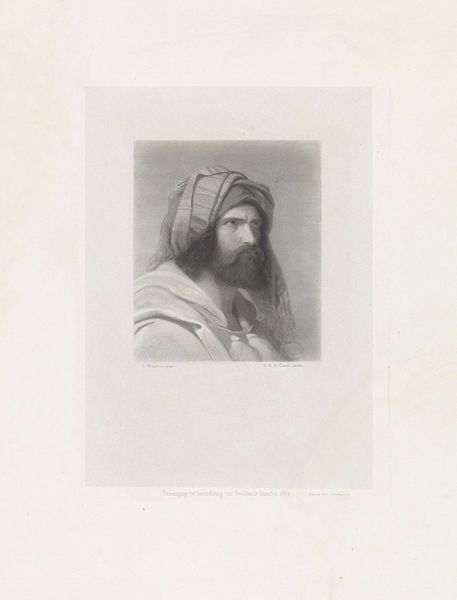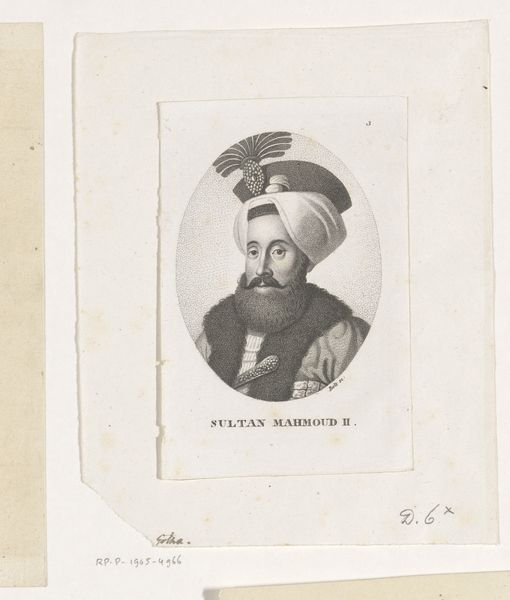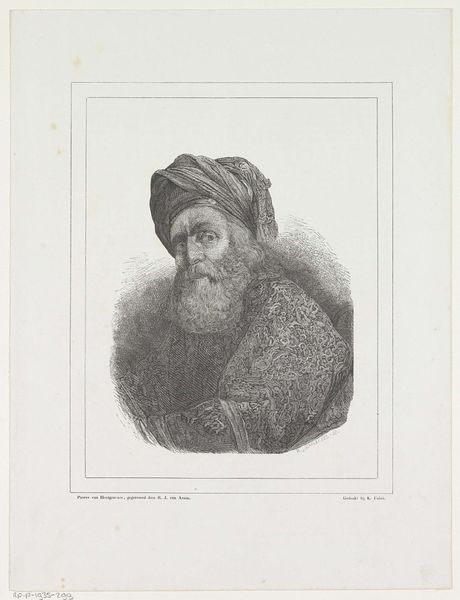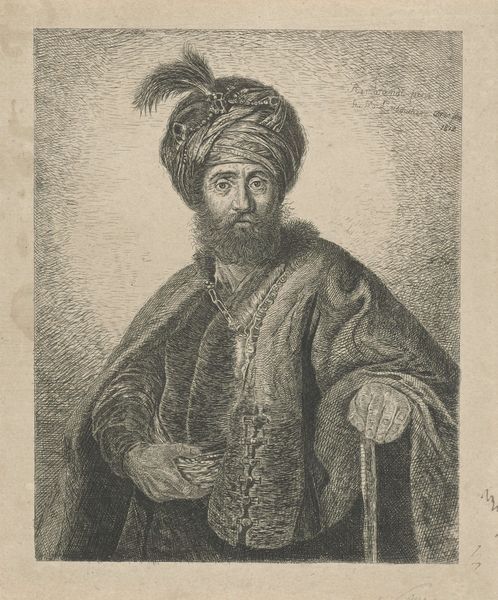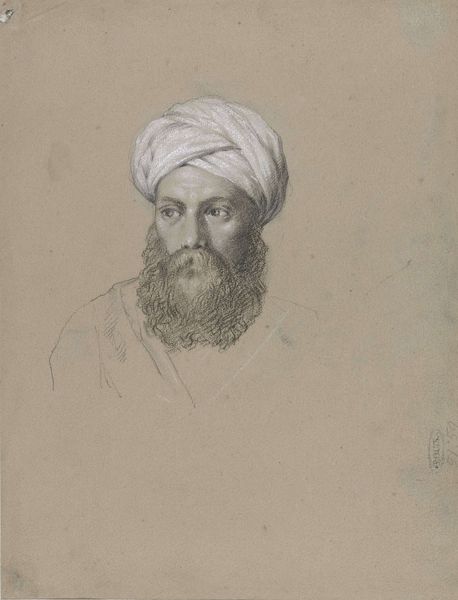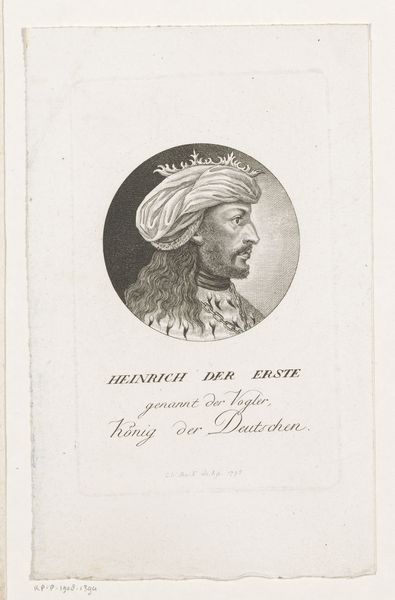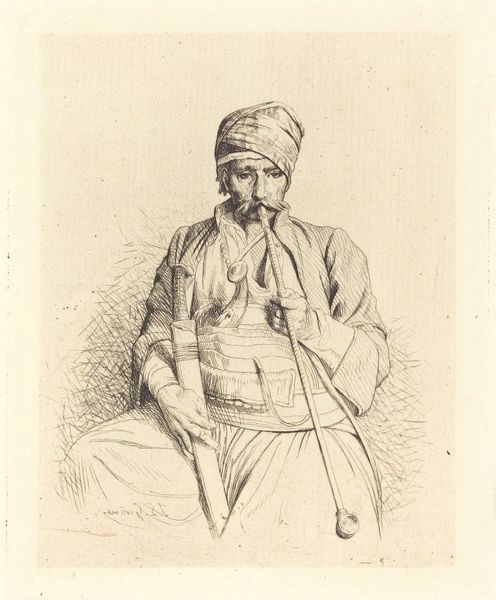
print, engraving
#
portrait
#
pencil drawn
#
toned paper
#
16_19th-century
# print
#
pencil sketch
#
pencil drawing
#
islamic-art
#
pencil work
#
engraving
Dimensions: height 453 mm, width 328 mm
Copyright: Rijks Museum: Open Domain
Editor: So this engraving from 1825 by Auguste Toussaint Lecler is called "Portret van Mohammed Ali van Egypte" or Portrait of Muhammad Ali of Egypt. I’m struck by how commanding his presence is, even in this black and white print. How do you interpret the significance of portraying him in this manner during that era? Curator: It’s a very powerful image indeed. Consider the context: Europe’s fascination with the ‘Orient’ was at its peak. Muhammad Ali was a figure of immense political importance, modernizing Egypt and posing a challenge to the Ottoman Empire, as well as a key figure in trade with European powers. This portrait, likely reproduced and circulated widely, would have contributed to shaping a European understanding – or perhaps misunderstanding – of his power and his culture. Notice his attire, the details of his turban and the ornamental dagger. What message do you think these details conveyed to a European audience? Editor: I imagine it was about conveying both power and exoticism. The turban, especially, would immediately signal the ‘otherness’ of this ruler, but the fine detail suggests a level of wealth and sophistication, even military prowess with the dagger prominently displayed. Was there any tension between portraying him as an exotic ‘other’ and acknowledging his political strength? Curator: Absolutely. This portrait is a negotiation between the romantic allure of the ‘Orient’ and the realpolitik of dealing with a powerful political player. The print serves to simultaneously exoticize and legitimize Muhammad Ali for a European audience, reinforcing existing power dynamics while acknowledging his importance on the world stage. It is crucial to recognize the European gaze embedded in the print, rather than interpreting the artwork solely from our own perspective. Editor: That’s a really helpful way to frame it. I was focused on just the portrait itself, but understanding its circulation and intended audience makes a huge difference. Thanks! Curator: Exactly. Thinking about the who, where, and why, we start to comprehend not only the artwork, but also how these images shape and manipulate political realities. A perfect reminder for me too.
Comments
No comments
Be the first to comment and join the conversation on the ultimate creative platform.

